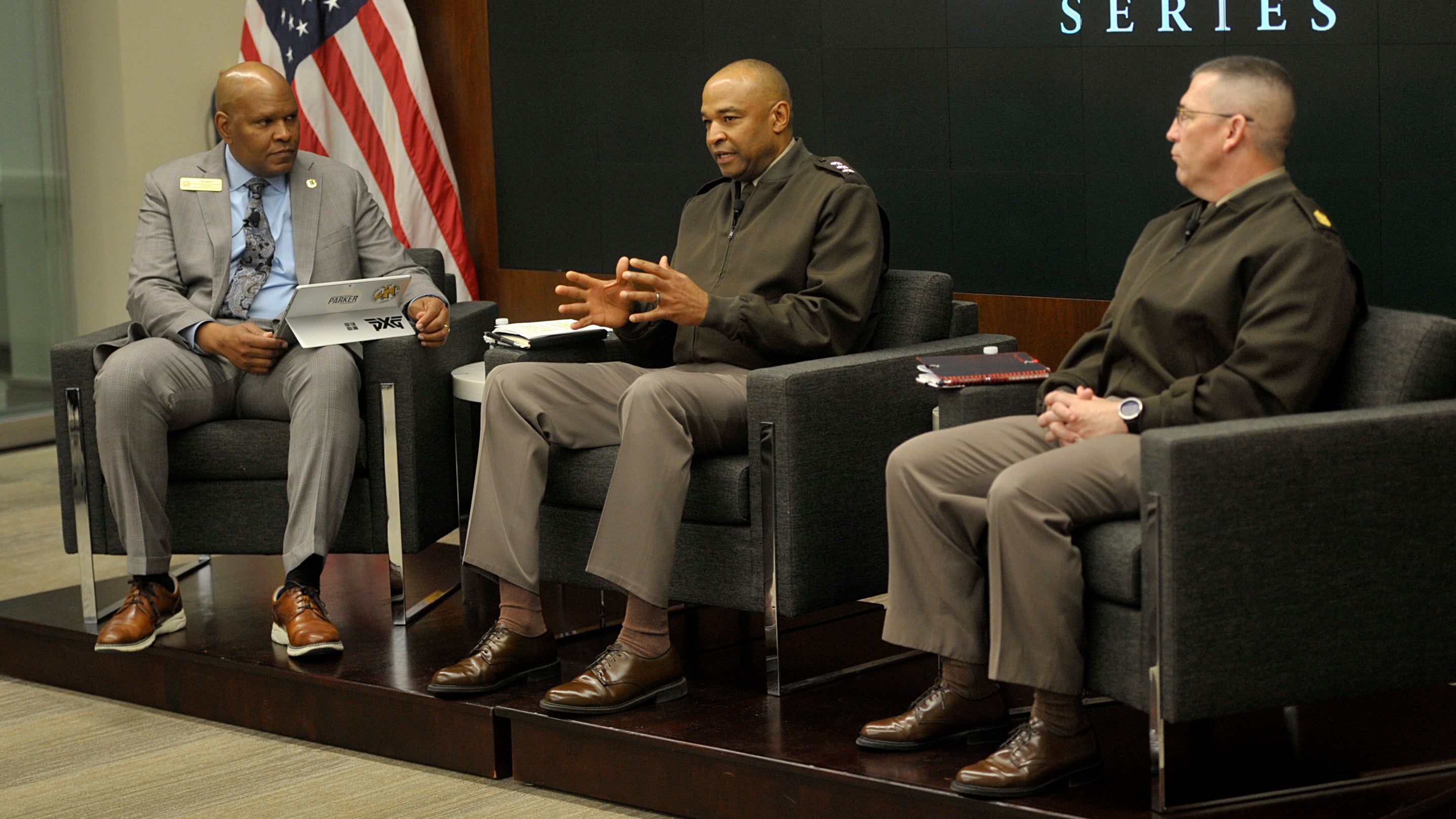Army Focused on Continued Quality-of-Life Improvements
Army Focused on Continued Quality-of-Life Improvements

While the Army is making progress on improving quality of life programs for soldiers and their families, there’s more work to be done, two senior leaders said.
Lt. Gen. Kevin Vereen, deputy Army chief of staff for installations, G-9, said he and his senior enlisted adviser, Sgt. Maj. Michael Perry, pay close attention to many of the most pressing issues facing soldiers and their families, including food insecurity, aging infrastructure and access to child care.
These efforts are critical, as these programs directly impact the Army’s readiness and ability to retain soldiers, the leaders said. “If our soldiers have problems, they can’t focus on training,” Vereen said April 25 at a breakfast hosted by the Association of the U.S. Army as part of its Coffee Series.
Food insecurity is a challenge for some soldiers, Vereen said. “We know that our soldiers, in some cases our younger soldiers, struggle financially, and … their income is not necessarily at a level where they compete with folks outside of the military, so there is food insecurity,” Vereen said.
To address the issue, Vereen said the Army is not only providing programs and resources to soldiers, it also is partnering with industry and civilian organizations that want to help. “That’s where we get a lot of our momentum, is really investing in the partnerships with industry to help us overcome some of the problems that the Army just does not have the capacity to be able to solve,” said Vereen, who has been on the job since September.
New resources, such as programs to help educate soldiers on how to manage their finances, are underway, Vereen said.
AUSA played a role in that effort. Last year, the association pledged $1 million to Army Emergency Relief to help soldiers struggling with food insecurity and reinforce the importance of financial readiness and well-being through an incentivized financial training program.
Resilient and modernized installations are another concern for Vereen and Perry, from improving barracks and housing conditions to hardening the installations against enemy attacks or disasters such as hurricanes and tornadoes.
“We’ve seen attacks out there in the civilian sector on some of that key infrastructure, so when we have the ability to partner with industry and in our communities in order to create resiliency, what that ultimately does is ensures that those installations, many of which are power projection platforms, will have the ability to project power if and when we need, whether it's to defend the homeland or it's going to be beyond,” Perry said.
When they travel to meet with Army communities and garrison commanders, Vereen and Perry said, they place special emphasis on making sure barracks are in good condition for soldiers, and that needed improvements are being prioritized along with new military construction.
“It's not anything that folks don't know. We’re short in certain areas when you think about the capacity to be able to house all of our soldiers, and so barracks is number one,” Vereen said. “We are on a full-court press to solve our housing.”

